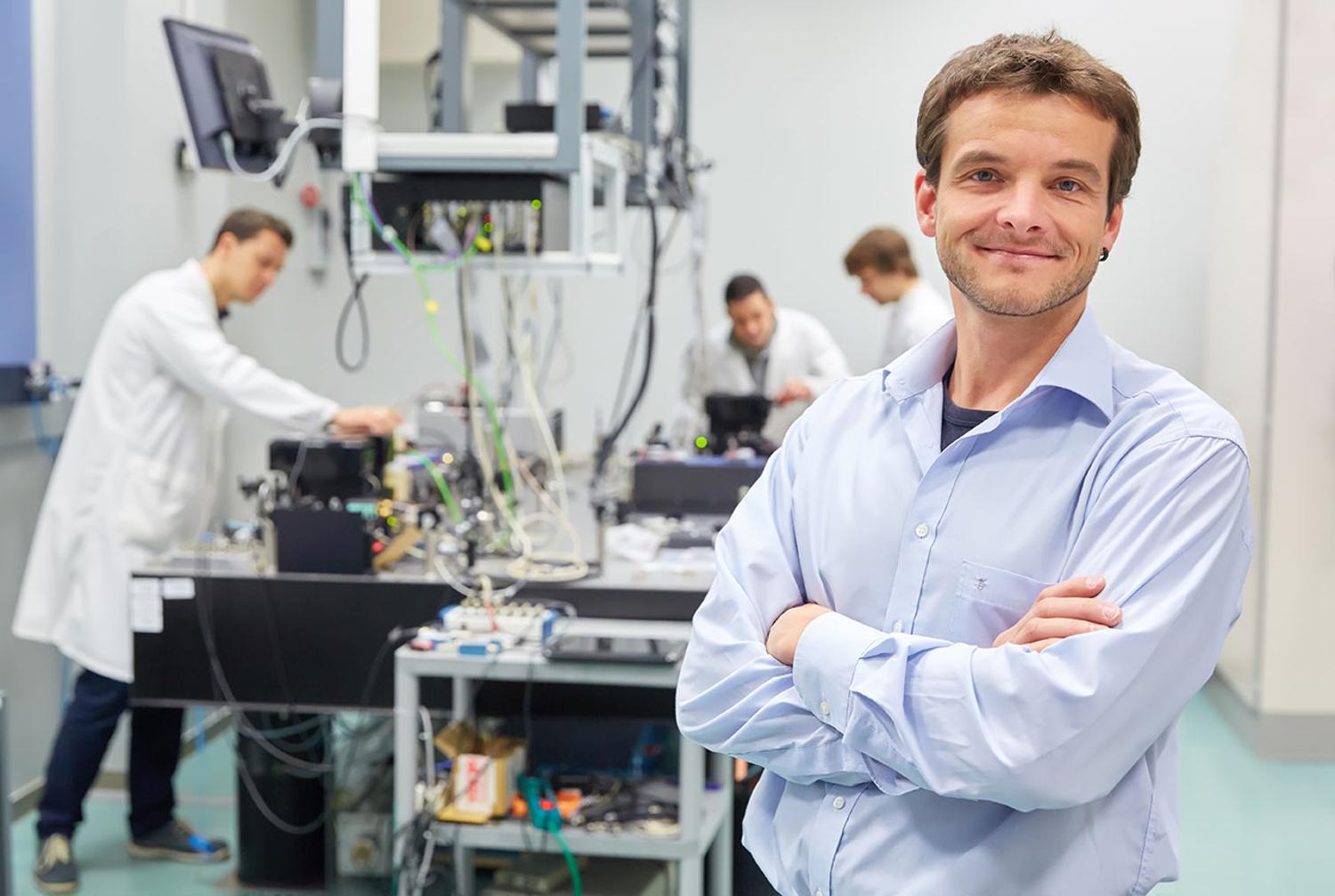Optical near-field nanoscopy for imaging and spectroscopy far below the diffraction limit
Talk of Rainer Hillenbrand at the Science Faculty of the UPV/EHU (Leioa), classroom 1.2.

With the development of scattering-type scanning near-field optical microscopy (s-SNOM), the analytical power of visible, infrared and THz imaging has been brought to the nanometer scale. The spatial resolution of about 10 - 20 nm opens a new era for modern nano-analytical applications such as chemical identification, free-carrier profiling and plasmonic vector near-field mapping.
s-SNOM is based on elastic light scattering from atomic force microscope tips. Acting as optical antennas, the tips convert the illuminating light into strongly concentrated near fields at the tip apex (nanofocus), which provides a means for localized excitation of molecule vibrations, plasmons or phonons in the sample surface. Recording the tip-scattered light subsequently yields nanoscale-resolved optical images, beating the diffraction limit in the infrared spectral range by more than two orders of magnitude.
After a brief overview of fundamentals and applications of s-SNOM, recent achievements such as infrared-spectroscopic nanoimaging of polymers and proteins will be presented, as well as the launching and mapping of propagating and localized plasmons in graphene.
Rainer Hillenbrand is Ikerbasque Research Professor and Nanooptics Group Leader at the nanoscience research center CIC nanoGUNE in San Sebastian (Basque Country, Spain), and a Joint Professor at the University of the Basque Country. He is also co-founder of the company Neaspec GmbH (Martinsried, Germany), which develops and manufactures near-field optical microscopes. From 1998 to 2007 he worked at the Max-Planck-Institut fuer Biochemie (Martinsried, Germany), where he led the Nano-Photonics Research Group from 2003 to 2007. He obtained his PhD degree in physics from the Technical University of Munich in 2001. Hillenbrand’s research activities include the development of optical near-field nanoscopy and infrared nanospectroscopy, and its applications in nanophotonics, graphene plasmonics, materials sciences and biology. In 2014 he received the Ludwig-Genzel-Price (awarded for exceptional contribution to the field of condensed-matter spectroscopy) “for the design and development of infrared near-field spectroscopy and the application of the novel spectroscopy method in different fields of natural sciences”.
Agenda
| Mon | Tue | Wed | Thu | Fri | Sat | Sun |
|---|---|---|---|---|---|---|
|
1
|
2
|
3
|
4
|
5
|
6
|
7
|
|
|
|
|
|
|
|
|
|
8
|
10
|
11
|
12
|
13
|
14
|
|
|
|
|
|
|
|
|
|
|
15
|
16
|
17
|
18
|
19
|
20
|
21
|
|
|
|
|
|
|
|
|
|
22
|
23
|
24
|
25
|
26
|
27
|
28
|
|
|
|
|
|
|
|
|
|
29
|
30
|
31
|
1
|
2
|
3
|
4
|
|
|
|
|
|
|
|
|
